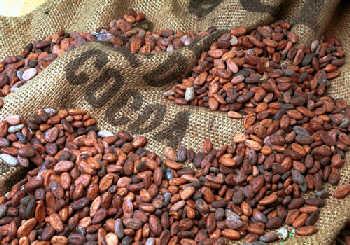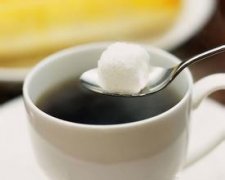The jargon of coffee is pleasantly sour.

● Pleasant acidity, acidic (sour) unpleasant sour (Sour)
Not only did he not smell the fragrance, but his taste buds were not as sensitive as usual. Think back, whenever cold stuffy nose, eat things do not feel more tasteless? Usually sour foods smell sour, and the taste we experience is actually a complex interaction of taste and smell. It seems difficult to separate taste from smell. No wonder the word "taste" itself includes the taste of smell and taste.
We often have the opportunity to taste various sour tastes, such as lemon, apple, wine, black vinegar... there is no doubt that sour taste is the delicious part of these foods: similarly, the wonderful sour taste is the reason why certain coffees are highly valued. In fact, all coffee has sour taste, because raw beans contain a lot of chloric acid, and during the roasting process, these chloric acids will be converted into various aromatic or pungent acids; however, these acids will be scorched at high temperatures, making the deeper the beans are roasted, the less sour.
It is not difficult to tell the difference between good and bad acids, just as you can tell the difference between fruit acids and hydrochloric acid. If the brew temperature is too low, or over-extraction, tannins, nicotine, etc. in the coffee will enter your mouth, irritate the underside of the tongue on both sides, accompanied by a nasal odor, making you feel uncomfortable. This is different from delicious acid, strong acid stimulates the edges of the tongue on both sides, evoking adjectives such as "thin" and "sharp", while soft acid in addition to the two sides of the tongue, near the middle of the tongue will also have a uniform feeling, so that some soft acid close to the salty (such as tomato and plum acid) or soda feeling. Because the distinctive acidity often overshadows the texture and becomes the main body of taste, some people use "clean" or "Bell-like" to describe the coffee with outstanding acidity.
The sour flavor adds richness to the sour taste. Some slightly irritating fragrances can refresh the mind, make people notice at once, give people a "bright" feeling; on the contrary, some fragrances give people a dark feeling. For example, ginger, soda, lemon, apple, orange, tomato, ripe banana, their brightness is getting lower and lower.
The reason why most people don't like the sour taste of coffee is probably that they are not used to sour and bitter together. Fortunately, sour taste can be suppressed by sweet taste, such as lemon juice with sugar, which is generally acceptable; if coffee is too sour, you can choose to add sugar. Sugar is not like milk, which not only does not affect the other mellow taste, but also can increase the sweetness of coffee.
● Clean
Coffee is not earthy, wild, flawed or dazzling.
● Balance
There are sufficiently complex and interesting features, but none of them stand out.
● Texture, Mouthfeel
Texture refers to the thick, sticky feel of coffee in the mouth, which is approximately proportional to the amount of colloidal suspension in coffee. Since the texture is felt throughout the mouth, we use the term "rich" to describe thick coffee, and vice versa. Thin coffee tastes like wine or lemonade, while rich coffee tastes like whole milk or syrup.
Complexity (Complexity)
It refers to the coexistence of different levels of characteristics in the same cup of coffee, with high complexity, indicating that there are many types of sensory stimuli that can be felt; it should be noted that these feelings include aftertones and are not necessarily limited to the current feelings when drinking.
● Depth
It is a subjective adjective that refers to resonance and influence beyond sensory stimulation, which may be caused by some detailed feelings or complex interactions between different feelings.
● Bitter
This is characteristic of dark baked beans, and like sourness, it is not necessarily unpleasant, but the sensation of the whole mouth and throat, not just the tongue. Most people who drink American coffee or espresso coffee may use the word "strong" to describe this characteristic.
● Sweet
It means two things. The first is the stimulation of sugar on the tip of the tongue, which is generally called sweetness; the other means that between deep city baking and Espresso baking, due to the part of astringent substances and rich texture of the mellow taste, reminiscent of syrup; this tongue does not have to react.
● Smooth
A sweet Espresso that is slightly sour and bitter, with a little sugar and can be drunk comfortably without milk.
Important Notice :
前街咖啡 FrontStreet Coffee has moved to new addredd:
FrontStreet Coffee Address: 315,Donghua East Road,GuangZhou
Tel:020 38364473
- Prev

The choice of coffee is like an interesting game of hide-and-seek
The choice of coffee is like an interesting game of hide-and-seek. Each caffeine variety has a different origin and has its own strong personality, but if you don't have the patience to taste it one by one, the following rules may allow you to find the right kind of coffee according to the map of your mood. Taste: people who have a lust for taste stimulation can try deep-fried coffee from Indonesia or Africa.
- Next

To make a large amount of Vienna iced coffee is a charm.
This coffee can also be enjoyed as a dessert. A substitute for vanilla iced coffee is also good for coffee or chocolate flavor. What to do: pour iced coffee into a frozen cup and add ice cream. It is topped with whipped cream and crushed cookies.
Related
- Beginners will see the "Coffee pull flower" guide!
- What is the difference between ice blog purified milk and ordinary milk coffee?
- Why is the Philippines the largest producer of crops in Liberia?
- For coffee extraction, should the fine powder be retained?
- How does extracted espresso fill pressed powder? How much strength does it take to press the powder?
- How to make jasmine cold extract coffee? Is the jasmine + latte good?
- Will this little toy really make the coffee taste better? How does Lily Drip affect coffee extraction?
- Will the action of slapping the filter cup also affect coffee extraction?
- What's the difference between powder-to-water ratio and powder-to-liquid ratio?
- What is the Ethiopian local species? What does it have to do with Heirloom native species?

